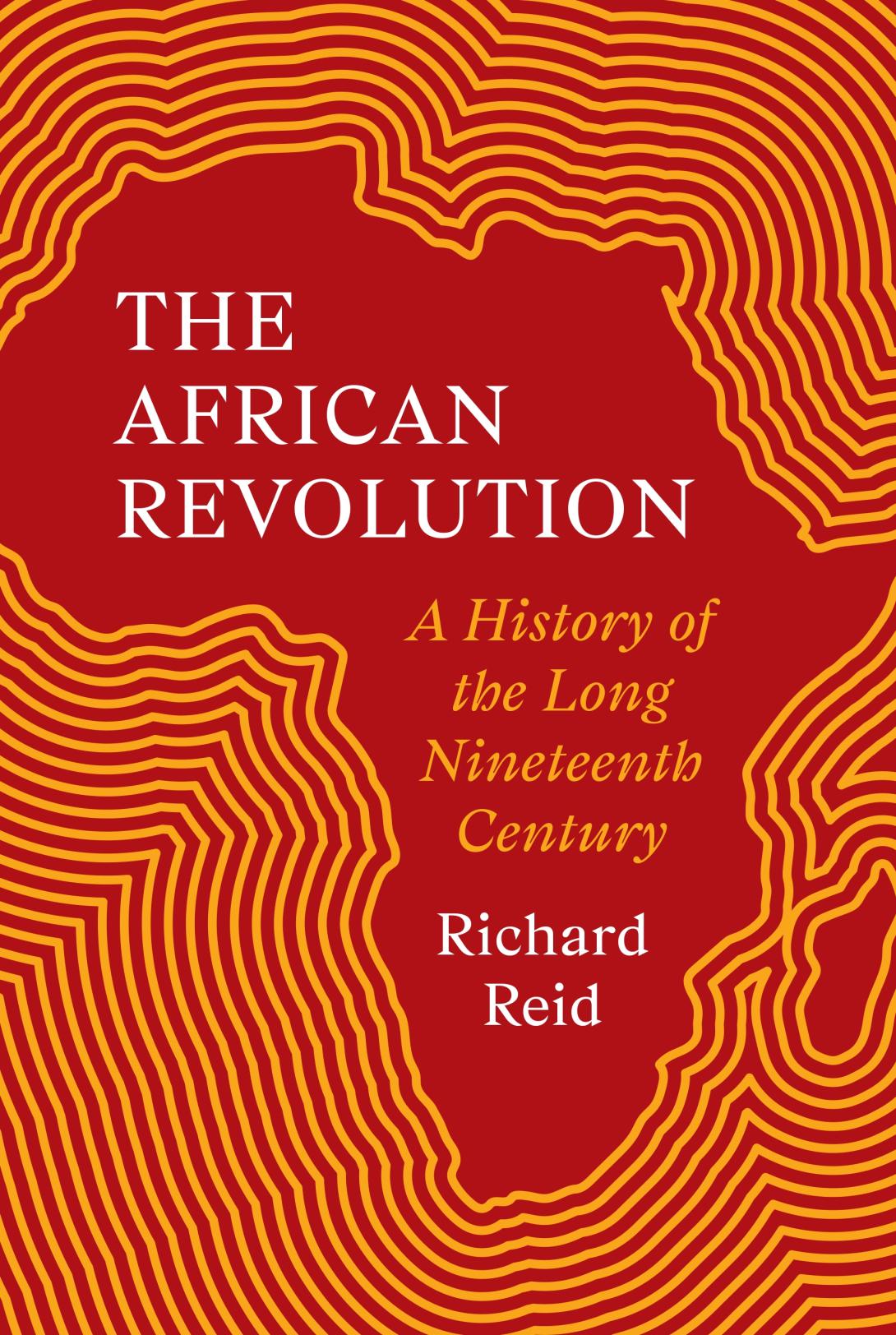The Scramble for Africa - But what happened in the previous century?

 Princeton U. Press
Princeton U. PressRichard Reid | The African Revolution: A History of the Long Nineteenth Century | Princeton University Press | 432 pages | 35 USD
The first European contacts with Africa by sea from the 15th century onwards are well documented. The transatlantic slave trade has been discussed from almost every angle. But what happened in Africa in the century before the European conquest? European control did not come out of nowhere. European technical superiority, medical protection against malaria and a growing European population made the conquest of Africa inevitable. At the beginning of his book, Richard Reid shows a map of an African continent under attack from all sides by 18 European military armies. Only Ethiopia, along with the newly founded Liberia, was able to evade this onslaught and maintain its independence. The European powers divided Africa among themselves at the Berlin Conference of 1884/85. From 1890 onwards, things moved rapidly.
Trade relations between the two continents had already been firmly established for centuries. Europeans bought slaves and ivory, while Africans bought modern weapons in exchange. Whoever owned these could conquer a territory, the condition being that in order to maintain their military superiority, they were obligated to continue the trade in slaves. New forms of rule therefore emerged along the trade routes. Slave traders often secured their own supplies and, over time, created a solid territorial base, which could, however, always be challenged by other traders. Superior firepower was king, rather than ancestral lines of rule. This was, in essence, the African Revolution of the 19th century. Warlords were able to establish empires almost everywhere, but these usually collapsed again with the death of the leader. One could also speak of a ruling mafia. The central, defining concept of this time was violence!
However, the author repeatedly finds very positive terms for the period between 1800 and 1890. There is talk of reinvention, economic transformation and visions of social advancement, of violence and historical consciousness. For Richard Reid, Africa is above all on the move! European trade is forcing the continent onto the world stage. And far from offering resistance, Africa seizes what it can. Trade, having initially developed along the coasts, increasingly penetrates into the interior in the 19th century. What the Europeans have to offer is attractive. First and foremost: firearms, supplied in exchange for people. Slavery has a long tradition in Africa, as does inter-tribal fighting. The great diversity of African peoples favoured this barter trade. The losers were those who failed to participate.
Trade empires emerged in East Africa, originating with Arabs living in Zanzibar. The most well-known was established by Tippo Tip. From 1870, he developed Nyangwe, founded in 1860 as a trading depot in what is now Congo, into the largest slave trading centre in Central Africa. This slave trade supplied the Arab-Muslim world. Trade with America had already come to a standstill by this time. The outlawing of the transatlantic slave trade permanently deprived many despots of their livelihood. Without the slave trade, the purchase of weapons was no longer affordable. The burgeoning of the exploitation of African raw materials only took place after the Europeans took possession of the continent.
Richard Reid divides post-1800 Africa into three major eras: pre-colonial (- 1890), colonial (1900 - 1960) and post-colonial (1960 - 2020 ?). He emphasises that the European conquest largely relied on the major changes that had been occurring since 1800. He also explicitly refers to some of the colonial demarcations. African rulers were sometimes able to protect themselves by cooperating with the conquerors, but any resistance was met with subjugation and slaughter. His main concern is to demonstrate that Africa was not 'terra incognita' before European subjugation - a space simply existing, cut off from the world except for a small stretch of coast - but in fact the opposite. The upheaval of the old African world was already in full swing, at the hands of Africans themselves. Ultimately, however, the technical lead of the Europeans was so great that no one could escape it. Autonomous African development was brutally stifled. Self-assertion was only possible intermittently and then only at great sacrifice. The Mahdi's one-off military victory over the British was only possible because he had sold " the Sudan" short, the only way he could finance his arms purchases. Joseph Ki-Zerbo writes about this in his book "Die Geschichte Schwarz-Afrikas" ("Histoire de l'Afrique Noire", published by Librairie Hatier in 1978 and in German by Peter Hammer Verlag in 1979). I would like to fly the flag here for this winner of the Alternative Nobel Prize. To my knowledge, he is the first African to have written a complete history of his continent and its peoples.
Richard Reid fills a gap with his book. Africa was never a continent excluded from history, as Europeans liked to claim. He provides impressive evidence of this for the 18th century. Nevertheless, there is one small drawback. Richard Reid very often writes in a kind of meta-language. He speaks, in context, in far more abstract that concrete terms about what happened. In my opinion, the book would have benefited from more facts. There is no doubt that the author has them.
Did you enjoy this article? If so, please support our work by making a one-off donation via PayPal, or by taking out a monthly or annual subscription.
Want to make sure you never miss an article from Literatur.Review again? Sign up for our newsletter here.



